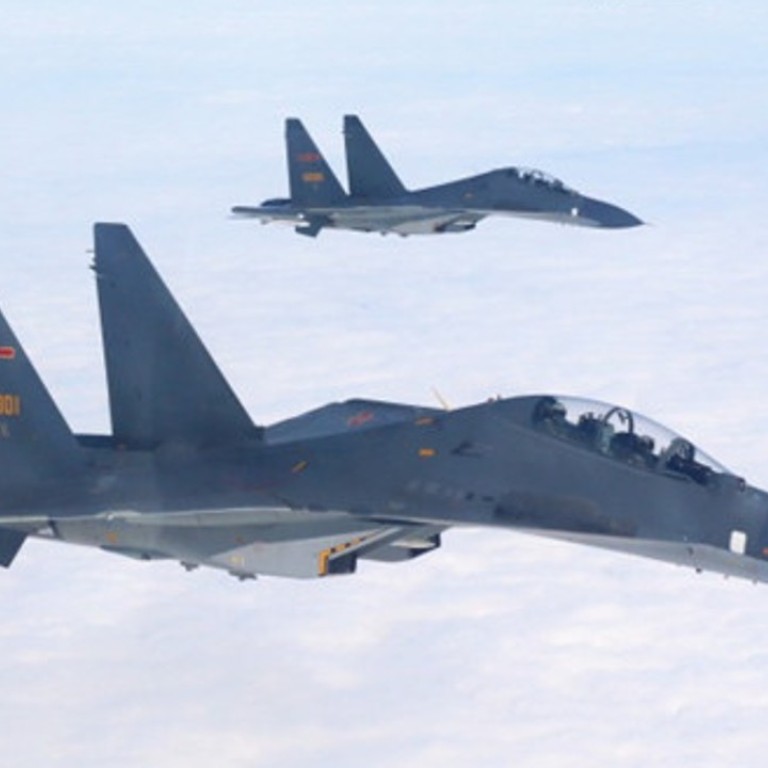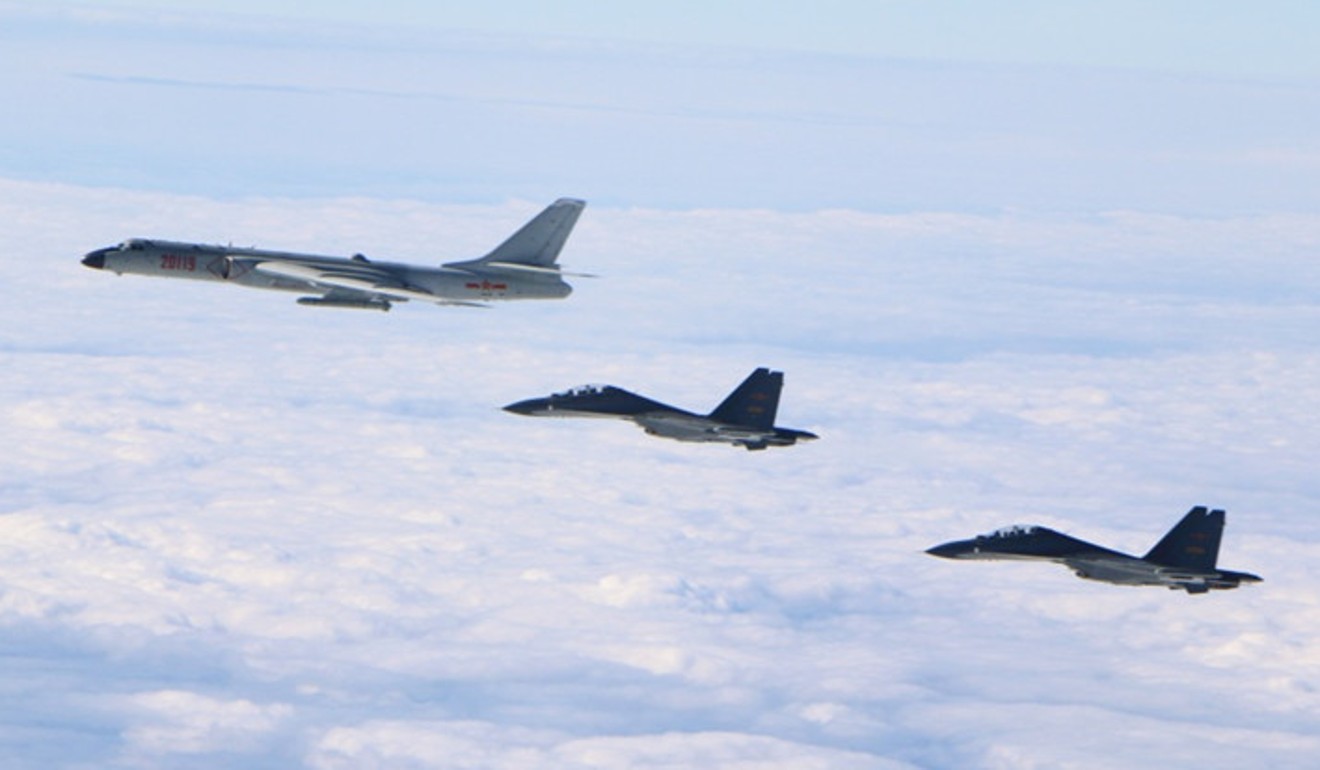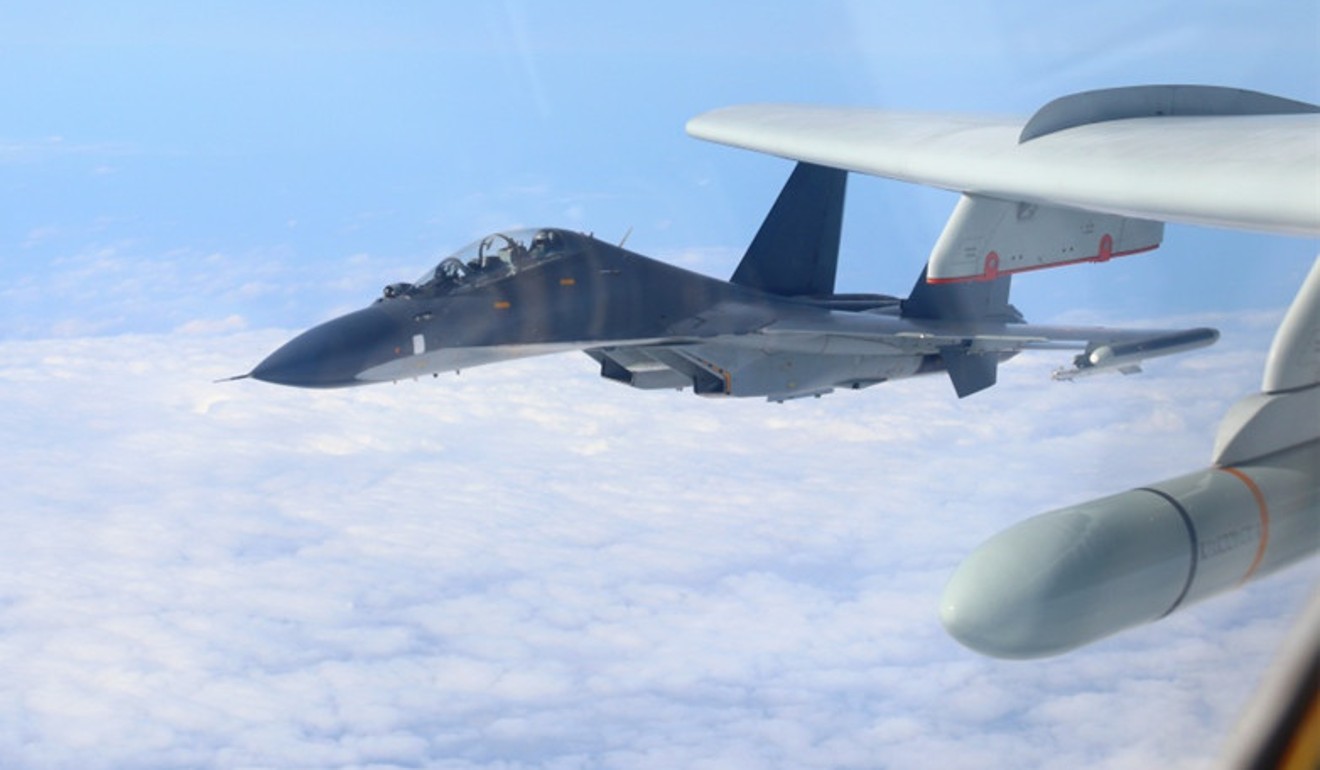
Chinese air force flexes muscle into Western Pacific in warning to Taiwan
Team of bombers, fighter jets and support aircraft evidence of country’s combat capabilities ‘on the high seas’, military spokesman says
Chinese warplanes conducted a series of multi-purpose drills in the Western Pacific on Monday including “island encirclement” patrols over Taiwan, the air force said on Tuesday.
The exercises came just a week after a spokesperson for the air arm of the People’s Liberation Army said it recently staged drills over the Yellow and East seas near the Korean peninsula, using “routes and areas it has never flown before”.
Monday’s drills involved aircraft flying over the Bashi Channel between Taiwan and the Philippines, and the Miyako Strait near the Japanese island of Okinawa. Other patrols encircled Taiwan, air force spokesperson Shen Jinke said, according to a statement posted on the air force’s website.

The aircraft, including long-range strategic H-6K bombers, Su-30 and J-11 fighter jets, and surveillance, early-warning and refuelling planes, were from the PLA’s Eastern and Southern Theatre Commands.
Chinese air force holds drills in ‘new routes and areas’ near Korean peninsula
“The team, which included [the latest generation of] H-6K bombers, strengthens [the air force’s] mobility and combat capabilities on the high seas,” Shen was quoted as saying, adding that the air force would continue to extend the range of its patrols.

Military commentators said the drills were also intended as a reminder to the independence-leaning Democratic Progressive Party that rules Taiwan that Beijing will not put up with any moves on secession.
China’s navy puts on show of strength for North Korea ... and United States’ east Asia alliance
“Exercises near Taiwan are [primarily] a warning to the DPP, which always plays down Beijing’s military might, and a reminder to the Taiwanese public,” Beijing-based military expert Zhou Chenming said.
“In the East China Sea, however, where China’s air defence identification zone overlaps with Japan’s, drills are more complicated and challenging, because Tokyo scrambles its fighters to [effectively] join the training, which helps the Chinese pilots to improve their combat skills,” he said.
Taiwan’s Defence Minister Feng Shih-kuan said on Tuesday that the island had dispatched aircraft and ships to monitor the PLA’s exercises, but said they were not unusual and that the public should not be alarmed.
Combat ready: Chinese air force puts new Y-9 transport planes through paces in South China Sea drill
China’s military has conducted several naval and air drills near Taiwan this year. In July, a flotilla led by its first aircraft carrier, the Liaoning, entered the Taiwan Strait en route to Hong Kong in a symbolic show of strength amid worsening cross-strait relations since DPP leader Tsai Ing-wen became president last year.
Song Zhongping, a military commentator with Hong Kong-based Phoenix Television, said that this week’s drills also helped to demonstrate China’s ability to break the “first island chain” – a series of archipelagos between China and the Western Pacific that Beijing says has been used by the United States to contain it since the cold war.
“Both the Miyako Strait and Bashi Channel are the main aisles used by the PLA navy and air force to reach the Western Pacific,” he said.
China hopes cold war nuclear energy tech will power warships, drones
“Frequent flights by Chinese [military] aircraft over those routes help to increase the PLA’s presence in the region and show off its growing combat effectiveness.”
Late last month, the PLA said teams led by H-6K bombers had conducted another round of air patrols over the East and South China Seas, again breaching the cold war era line of containment.
The Island Chain Strategy was first mentioned by US statesman and diplomat John Foster Dulles in 1951 during the Korean war as a way of containing Communist countries allied to the Soviet Union.
With the current climate on the Korean peninsula, Monday’s drills were also useful for China as preparation for a possible nuclear conflict on its doorstep.
What are the differences between China’s two aircraft carriers?
As tensions between Pyongyang and Washington continue to bubble, the threat of war was very real, Hong Kong-based military observer Liang Guoliang said.
“While China has pushed for a peaceful resolution to the conflict, circumstances are such that war and peace are equally likely outcomes,” he said.
“To prepare for the worst, the PLA will conduct more frequent and more targeted drills in the region involving the different forces from its theatre commands.”

